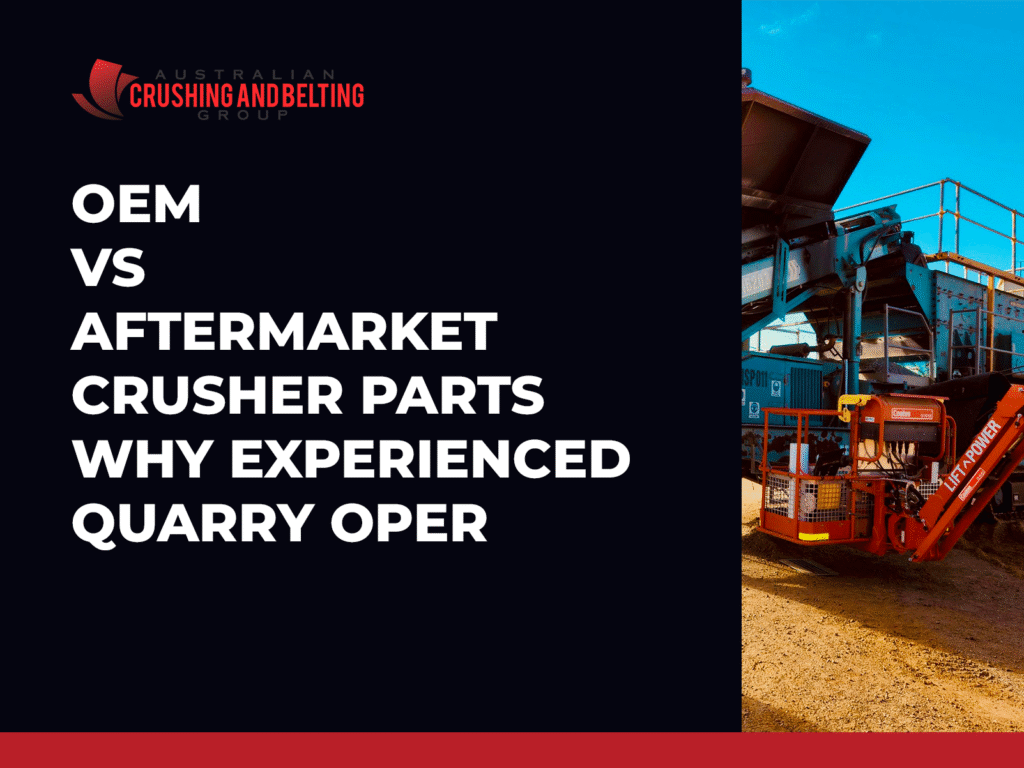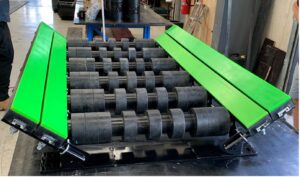In rock crushing, downtime costs and worn parts are inevitable. Whether you’re running a quarry or mobile unit, your crusher’s components are key. So when replacements are due, do you stick with OEM parts—or switch to smarter aftermarket options?
Spoiler: More and more experienced quarry operators are choosing quality aftermarket parts, and they’re not looking back. Let’s break down why.
First, What’s the Deal with OEM Parts?
OEM parts are the ones made by the company that originally manufactured your crusher. If you’ve got a Metso, Sandvik, or Terex machine, the OEM parts are the “official” components made specifically for that model. These parts are typically marketed as a perfect match—plug-and-play, no surprises.
Sounds ideal, right? Not always.
OEMs often charge a premium for their parts, banking on brand trust and the perception of compatibility. But seasoned operators have learned that “official” doesn’t always mean “optimal.” And it definitely doesn’t always mean affordable.
Enter Aftermarket Parts: Not Just Cheap Imitations Anymore
The term aftermarket used to carry a bit of a stigma—like the parts were knock-offs made in someone’s garage. But the reality today? A different story altogether.
Quality aftermarket crusher parts are engineered by specialized manufacturers who often reverse-engineer OEM components—then improve them. Think better alloys, smarter design tweaks, and performance upgrades you didn’t know you needed until you had them.
The best aftermarket suppliers aren’t just copying—they’re innovating. They know the weak spots in OEM designs, and they design around them.
The Performance Equation: OEM vs Aftermarket
Let’s talk real-world results. Experienced operators aren’t making the switch to aftermarket just to save a few bucks—they’re doing it because the right aftermarket parts can outperform the originals. Here’s how:
Wear Life: Premium aftermarket parts are often made from tougher, more abrasion-resistant alloys. That means they last longer before needing to be swapped out.
Custom Optimization: Aftermarket suppliers can tailor components to your specific crushing application. Granite is not limestone, and basalt is a beast of its own. OEMs sell to the masses—aftermarket suppliers focus on the niche.
Downtime Reduction: When aftermarket parts last longer and fit right the first time, you spend less time with the crusher lid open and more time feeding the hopper.
Price Isn’t Everything—But It Matters
Let’s be honest—cost is a major driver. OEM parts can come with a serious markup. Aftermarket parts? Often 20-40% cheaper. For large operations burning through liners, mantles, and blow bars at scale, that difference adds up—fast.
But it’s not just the sticker price. Consider the total cost of ownership. If an aftermarket part gives you longer wear life and keeps your crew off maintenance duty for a few extra shifts, that’s money saved in both parts and labor.
Availability and Lead Time: The Hidden Killer
If you’ve ever had a crusher offline for days waiting for a part to arrive from an overseas OEM warehouse, you already know the pain. Lead time is the silent killer of productivity.
Aftermarket suppliers often stock a wider range of parts locally—or can get them to you faster. Some even offer custom manufacturing or emergency response programs to get you back up and running now, not “in 10-12 business days.”
Trust is Earned: Vetting Your Aftermarket Supplier
Here’s the deal: not all aftermarket parts are created equal. If you’re buying the cheapest thing off a sketchy website, you’re playing a dangerous game with your machine—and your reputation.
But reputable aftermarket manufacturers are different. They’re typically laser-focused on crushers, and many have engineers with decades of crushing experience under their belts. They offer warranties. They provide technical support. Some even run wear simulations and lab tests to help you choose the right composition for your application.
Want to separate the pros from the posers? Look for:
Proven wear life results
Metallurgical data and testing
Application-specific recommendations
Reliable delivery logistics
Good old-fashioned word of mouth
When OEM Still Makes Sense
Let’s not pretend there’s no place for OEM parts. If your machine is under warranty or you’re dealing with highly complex electronics and sensors, sticking with OEM might be the smart play.
Also, some proprietary parts—especially on newer crushers—might only be available through the OEM. Fair enough.
But for high-wear components like liners, jaws, mantles, blow bars, and screen media? That’s aftermarket territory all day long.
Final Crush: Why Experienced Operators Choose Smart
The best operators don’t buy based on brand stickers—they buy based on results. If a part fits better, lasts longer, costs less, and gets delivered faster, that’s the part that wins.
Quality aftermarket crusher parts have gone from a gamble to a proven edge. They give you more control over performance, cost, and uptime. And in an industry where margins are tight and expectations are high, that’s the kind of edge that separates the pros from the amateurs.
So next time your crusher’s chewing through steel like it’s candy, take a second look before automatically ordering OEM. Chances are, there’s an aftermarket solution that’s not just cheaper—it’s smarter.
Crushing smarter isn’t just a catchphrase. It’s a strategy.
Need help finding a trustworthy aftermarket supplier? Start local, ask other quarry operators, and don’t be afraid to grill your vendors. Because when it comes to crusher parts, experience isn’t just a teacher—it’s a filter.
Stay sharp. Keep crushing.






